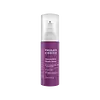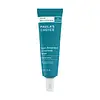What's inside
What's inside
 Key Ingredients
Key Ingredients

 Benefits
Benefits

 Concerns
Concerns

 Ingredients Side-by-side
Ingredients Side-by-side

Water
Skin ConditioningNiacinamide
SmoothingGlycerin
HumectantTranexamic Acid
AstringentC13-15 Alkane
SolventCaprylic/Capric Triglyceride
MaskingDicaprylyl Carbonate
EmollientEthyl Macadamiate
Skin ConditioningBehenyl Alcohol
EmollientGlyceryl Stearate
EmollientButylene Glycol
HumectantSilybum Marianum Seed Oil
Skin ConditioningTocopherol
AntioxidantLactobacillus/Coconut Fruit Juice Ferment Filtrate
Skin ConditioningLecithin
EmollientBakuchiol
AntimicrobialXanthan Gum
EmulsifyingCaprylyl Glycol
EmollientHydrogenated Lecithin
EmulsifyingAllantoin
Skin ConditioningGlycine Soja Oil
EmollientHexylene Glycol
EmulsifyingBoerhavia Diffusa Root Extract
Skin ProtectingGlycine Soja Sterols
EmollientCitric Acid
BufferingSodium Phytate
Malic Acid
BufferingPhenoxyethanol
PreservativeEthylhexylglycerin
Skin ConditioningWater, Niacinamide, Glycerin, Tranexamic Acid, C13-15 Alkane, Caprylic/Capric Triglyceride, Dicaprylyl Carbonate, Ethyl Macadamiate, Behenyl Alcohol, Glyceryl Stearate, Butylene Glycol, Silybum Marianum Seed Oil, Tocopherol, Lactobacillus/Coconut Fruit Juice Ferment Filtrate, Lecithin, Bakuchiol, Xanthan Gum, Caprylyl Glycol, Hydrogenated Lecithin, Allantoin, Glycine Soja Oil, Hexylene Glycol, Boerhavia Diffusa Root Extract, Glycine Soja Sterols, Citric Acid, Sodium Phytate, Malic Acid, Phenoxyethanol, Ethylhexylglycerin
Cyclopentasiloxane
EmollientIsododecane
EmollientDimethicone Crosspolymer
Emulsion StabilisingNeopentyl Glycol Diheptanoate
EmollientCyclohexasiloxane
EmollientCaprylic/Capric Triglyceride
MaskingTocopheryl Acetate
AntioxidantRetinyl Palmitate
Skin ConditioningRetinol
Skin ConditioningTetrahexyldecyl Ascorbate
AntioxidantAstaxanthin
Skin ConditioningBisabolol
MaskingChamomilla Recutita Flower Extract
MaskingCamellia Sinensis Leaf Extract
AntimicrobialSalix Alba Bark Extract
AstringentVitis Vinifera Seed Extract
AntimicrobialGinkgo Biloba Leaf Extract
Skin ConditioningCalluna Vulgaris Flower Extract
Skin ConditioningVaccinium Macrocarpon Fruit Extract
AstringentRubus Idaeus Fruit Extract
AstringentBetula Alba Bark Extract
MaskingGlycine Soja Oil
EmollientSilica
AbrasivePhenoxyethanol
PreservativeCyclopentasiloxane, Isododecane, Dimethicone Crosspolymer, Neopentyl Glycol Diheptanoate, Cyclohexasiloxane, Caprylic/Capric Triglyceride, Tocopheryl Acetate, Retinyl Palmitate, Retinol, Tetrahexyldecyl Ascorbate, Astaxanthin, Bisabolol, Chamomilla Recutita Flower Extract, Camellia Sinensis Leaf Extract, Salix Alba Bark Extract, Vitis Vinifera Seed Extract, Ginkgo Biloba Leaf Extract, Calluna Vulgaris Flower Extract, Vaccinium Macrocarpon Fruit Extract, Rubus Idaeus Fruit Extract, Betula Alba Bark Extract, Glycine Soja Oil, Silica, Phenoxyethanol
 Reviews
Reviews

Ingredients Explained
These ingredients are found in both products.
Ingredients higher up in an ingredient list are typically present in a larger amount.
This ingredient is an emollient, solvent, and texture enhancer. It is considered a skin-softener by helping the skin prevent moisture loss.
It helps thicken a product's formula and makes it easier to spread by dissolving clumping compounds.
Caprylic Triglyceride is made by combining glycerin with coconut oil, forming a clear liquid.
While there is an assumption Caprylic Triglyceride can clog pores due to it being derived from coconut oil, there is no research supporting this.
Learn more about Caprylic/Capric TriglycerideGlycine Soja Oil comes from the soybean. Glycine Soja is native to eastern Asia.
Soybean oil is an emollient. It is rich in antioxidants and fatty acids including palmitic, stearic, oleic, and linoleic acids.
As an emollient, the fatty acids in soybean oil helps keep your skin soft and hydrated. It does so by creating a film on top that traps moisture in.
Soybean oil is also rich in vitamin E, a potent antioxidant. Vitamin E is also anti-inflammatory and provides a soothing effect.
Studies show soy may help fade hyperpigmentation from UVB. It does so by disrupting the melanin process from UVB induced skin inflammation.
This ingredient may not be malassezia folliculitis, or fungal-acne, safe.
Soybeans are rich in proteins and are part of the legume family. Foods made with soybeans include tofu, soymilk, edamame, miso, and soy sauce.
Learn more about Glycine Soja OilPhenoxyethanol is a preservative that has germicide, antimicrobial, and aromatic properties. Studies show that phenoxyethanol can prevent microbial growth. By itself, it has a scent that is similar to that of a rose.
It's often used in formulations along with Caprylyl Glycol to preserve the shelf life of products.